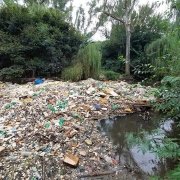How PVC packaging is recycled in South Africa
Polyvinyl chloride (PVC) is one of the most common polymers used by plastics manufacturers in South Africa. It is used to manufacture irrigation pipes, medicine bottles, gumboots and so much more. However, PVC is more difficult to recycle than PET due to the chlorine content of the polymer.
Processing PVC plastics requires special machinery. Many small-scale recyclers in South Africa cannot process PVC, so plastics manufacturers have started to replace PVC products with PET. The one advantage of PVC is that it contains less carbon content than other thermoplastics.
PVC can be recycled up to eight times before becoming too brittle, depending on the application and the state of the plastic. It is also more energy-efficient to manufacture and process than other types of plastic. These characteristics make PVC a valuable polymer, especially when recycled properly.
Two methods of recycling PVC
There are two ways to recycle PVC; mechanical recycling by grinding it into small pellets which are then melted and remoulded into new products, or feedstock recycling where chemical processes break down the polymer into its basic chemical components. Both of these methods are used in South Africa but the mechanical recycling method is more common.
Unlike feedstock (chemical) recycling, mechanical recycling keeps the original composition of the PVC waste. This poses a problem because many PVC products contain additives and additional chemicals to make them rigid or flexible. For example, flexible PVC contains added plasticizers to increase the fluidity of the product.
Even products used for similar applications may contain different amounts of additives, which makes mechanical recycling more difficult. PVC recyclate requires very specific compositions for different applications. In order to produce a high-quality recyclate, the PVC waste should be separated into uniform compositions before being mechanically processed.
This is where feedstock recycling has its advantages. By breaking down the recyclate into its basic chemical components, a mix of unsorted PVC products can be processed at the same time. However, feedstock recycling is more expensive than mechanical processing and the end-market for the recovered chemicals is not as big. This gives recyclers fewer incentives to use chemical methods to process PVC waste.
Post-consumer vs post-industrial PVC waste
The PVC waste that comes from post-consumer sources is often mixed in type and quality. On the other hand, PVC waste from post-industrial sources (factories) is often the same. This means that it is far easier to mechanically recycle the waste from post-industrial sources as it does not need to be sorted first. Post-consumer sources of waste require careful separation before being mechanically processed.
Post-industrial waste is relatively pure as it comes straight from the factories that produce one type of product (or products with similar chemical compositions). This waste is easy to collect and recycle since it comes directly from the source or the manufacturer and the quality is high. Post-consumer waste contains mixed materials that were used for various applications and the quality of the waste is often degraded.
PVC products are extremely durable – sometimes with a lifespan of over 50 years. The strength of this polymer lends itself to a lifetime of reuse, making PVC a valuable plastic. By reusing and recycling these products, we can maximise their usefulness while minimising their environmental impact.
___
Plastics SA represents all sectors of the South African plastics industry. Together with our associations, we play an active role in the growth and development of the industry and strive to address plastics related issues, influence role-players and make plastics the material of choice.
Plastics SA has been mandated to ensure a vibrant and sustainable plastics industry in South Africa. The plastics sector is uniquely placed to meet the needs of a sustainable society and to deliver solutions to many challenges such as recycling, climate change, water scarcity, resource usage and energy recovery.
For more news, updates and information on the South African plastics industry, follow us on Facebook, Twitter, Instagram, YouTube, LinkedIn and Pinterest.









